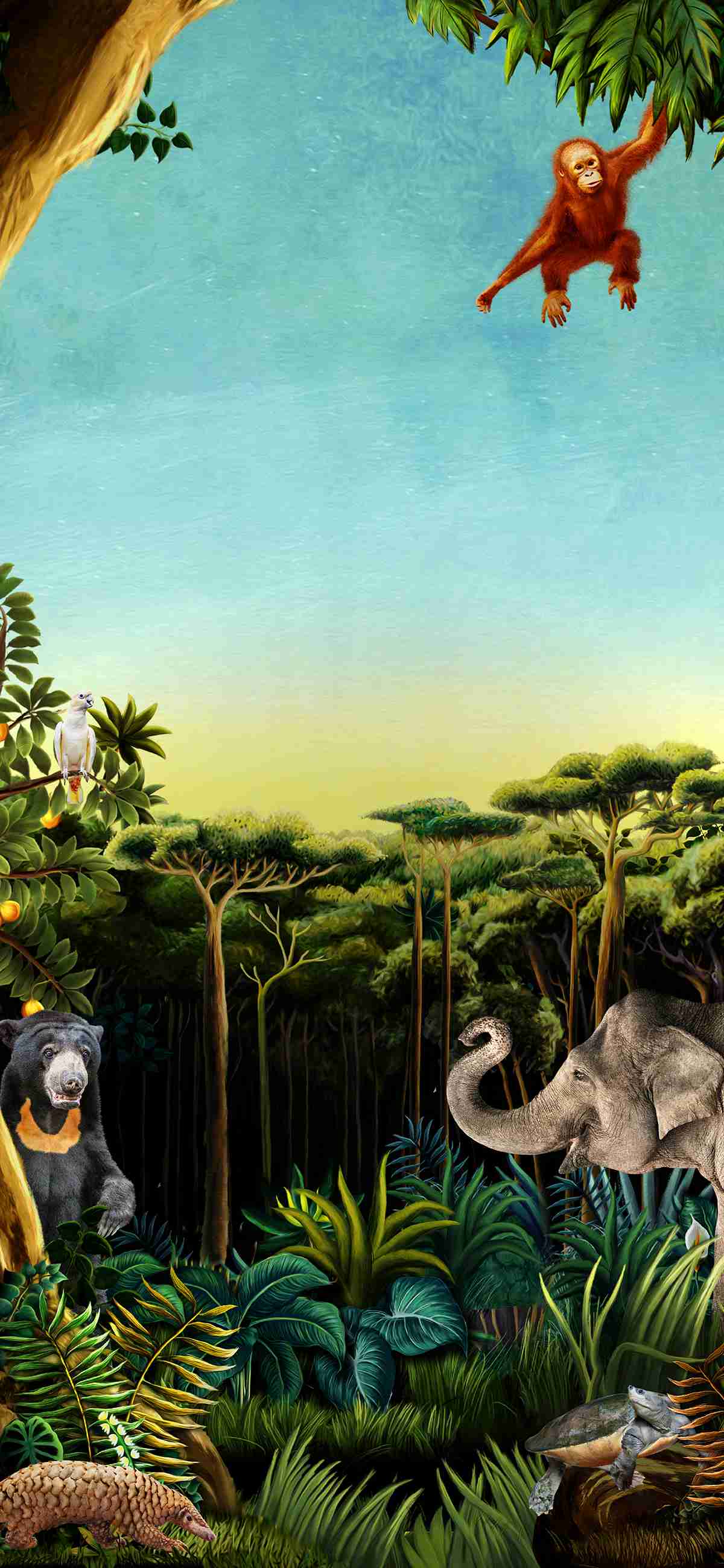AnimalsOver 21,000 animals representing nearly 1,000 species call Mandai their home.
Animals In Our Care
Threatened26% of the animal species we care for are threatened with extinction in the wild.
Animals in

Aardvark
Nicknamed antbear for its appetite for ants and termites, the aardvark can consume as many as 50,000 insects in a night.

African lion
Lions live in social groups known as prides, made up of one or more mature males, several closely-related females and their young. Males roar and spray urine to advertise their territory to rivals.

African painted dog
Hunting dogs look out for their pack members, especially the young and the sick.

African pike
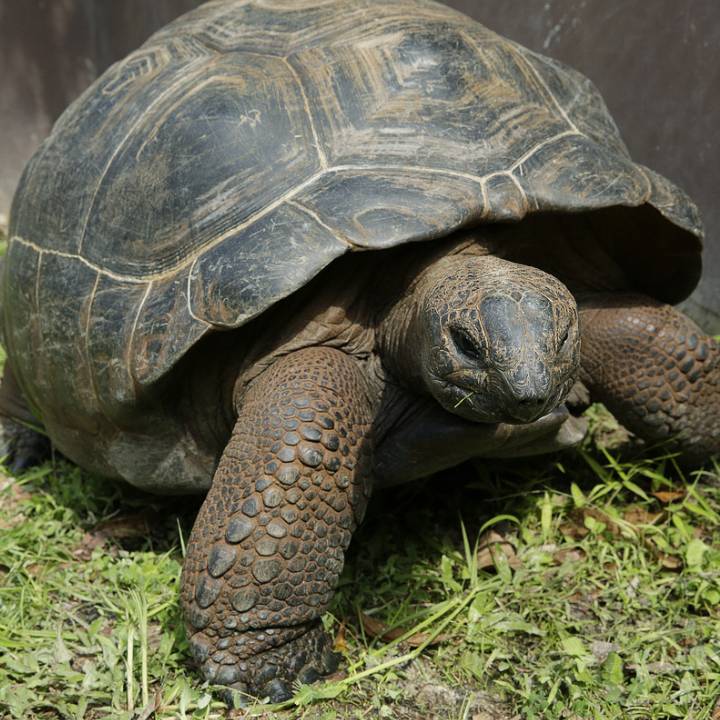
Aldabra giant tortoise
Naturally found at Aldabra Atoll, learn how we provide world-class care to our endangered Aldabra giant tortoises at Singapore Zoo.

Altum angelfish

Amazonian motmot
Multi-coloured with a long tail ending in two racquets, this dashing crow-sized bird can be found across a broad swathe of lowland forests.

American flamingo
This species has the most vibrant plumage of all flamingo species.

Andean cock-of-the-rock
The Andean cock-of-the-rock belongs to the cotinga family of colourful fruit-eating forest birds.

Arapaima

Armadillo
Though “Armadillo” is Spanish for “little armoured thing”, it is more than just “a roly-poly shell with bands”. The armadillo can hold its breath for six minutes, and its diet consists of insects, small reptiles, and even amphibians.

Asian arowana
Growing up to 90cm in length, they launch their thin, powerful bodies out of the water to capture aerial prey.

Asian brown tortoise
Growing up to 60cm in length and 40kg in weight, it is the largest tortoise species in Asia.

Asian elephant
When size doesn't help. With 40,000-50,000 left in the wild, will the last of the megaherbivores be wiped out too?

Asian lion
With a comparatively shorter, sparser and darker mane, the male Asian lion's ears are exposed and visible at all times.

Asian small-clawed otter
Living in close-knit social groups of up to 20 individuals, these otters communicate through squeals, chirps, screams and barks, and use scent marking to communicate and mark territory.

Asian small clawed otter
These smallest of 13 otter species in the world are social and playful animals.

Australian lungfish

Axis deer
These speedy deer can run at speeds of up to 60km per hour and jump over obstacles over 1.5m high.
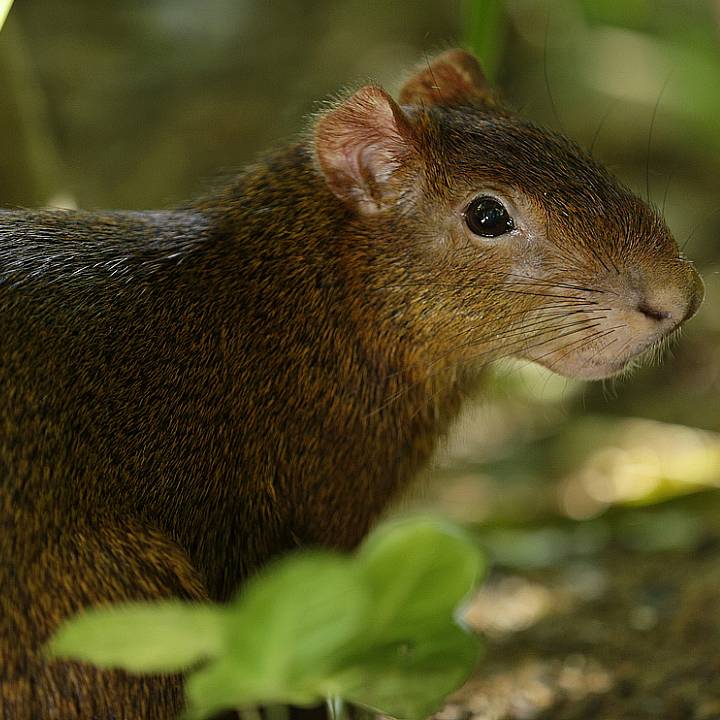
Azara's agouti
Azara's agouti is a medium-sized rodent found in South America and plays a vital role in the ecosystem by burying seeds, which helps with forest regeneration.

Babirusa
The babirusa's twisted tusks can grow so long that, if not worn down, start curving back toward their own skull!

Babirusa
Babirusa means pig deer in Malay due to its tusks that look very much like the antlers of a deer.

Babirusa

Bali myna
Before conservation efforts brought them back, there were only six of these birds left in the wild in 2001.

Bali myna
The Bali myna is almost entirely white with long head plumes and black wing-tips. Endemic to Bali where it formerly ranged across the north-west third of the island, the species was never very widely distributed.

Banded archerfish

Bar-headed goose
As one of the world's highest-flying birds, the bar-headed goose has reached a record altitude of over 7,000m. It migrates over the Himalayas, flying from Mongolia to India to escape the harsh winters.

Barasingha
Also known as the swamp deer, it is not uncommon for this large species to have up to 20 tines on their antlers.

Barking deer
Also known as ‘muntjacs’ or ‘rib-faced deer’, this species fights for territory with their "tusks”, which are actually downward-pointing canine teeth.

Bearded pig
Large and long-legged with elongated faces, these pigs have “beards” up to 15cm long, and tusks up to 25cm in length.

Binturong
Nicknamed the ‘Bearcat’, the binturong is actually related to civets and fossas. Amazingly, it smells like pandan leaves or buttered popcorn!

Black-faced spoonbill
Black-faced spoonbills are the rarest spoonbills and the only species of spoonbill to be classed as Endangered on the IUCN Red List.

Black-winged myna
The black-winged mynas' melodious song, along with their lively temperament and striking plumage make them highly-prized in the cage bird trade.

Black phantom tetra

Blind cave fish
These fish have a more sensitive lateral line system which detects vibrations or changes in pressure in water.

Blood python
These striking snakes can see a thermal image of their surroundings, making them effective hunters in the dark.

Blue-crowned laughingthrush
These birds forage in flocks of 40 or more, looking through leaf litter on the ground, or flitting from one leafy branch to another in bushes and trees, gleaning for insects.

Blue-winged macaw
Whittled down by habitat loss, trapping for the pet trade and persecution as crop pests, there are only 1,500 to 7,000 mature blue-winged macaws left in Brazil, Paraguay and Argentina.

Boeseman's rainbowfish

Bolivian ram cichlid

Bongo

Bornean orangutan
Orangutans are apes, which means that unlike monkeys, they do not have a tail. Found in the rainforests of Borneo and Sumatra, they have special feet with long toes for grasping branches, and long limbs that can stretch out far so that they can move easily through the treetops.

Brazilian porcupine
Though adorable, this species does not hesitate to attack an adversary, which it does by biting, or sitting on its haunches to shake its quills.

Brown lemur
The brown lemur moves through the forest canopy on all fours. Its tail is as long as or longer than its body and is used to maintain its balance when it performs aerial leaps.

Buffy fish-owl
Though their diet consists mostly of fish, these owls also prey on crabs, shrimp, frogs, crayfish, small mammals, large insects, snakes, and even young false gharials.
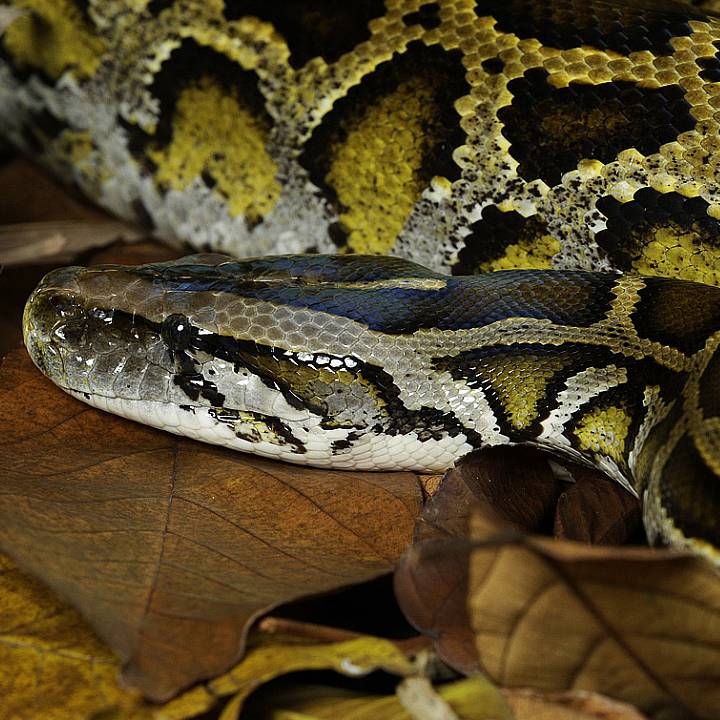
Burmese python
Known to grow up to 7m in length, this python is one of the top five largest snakes in the world.

Capuchinbird
This bizarre bird inhabits the evergreen lowland rainforests of South America where it forages for fruits and large insects in the canopy.
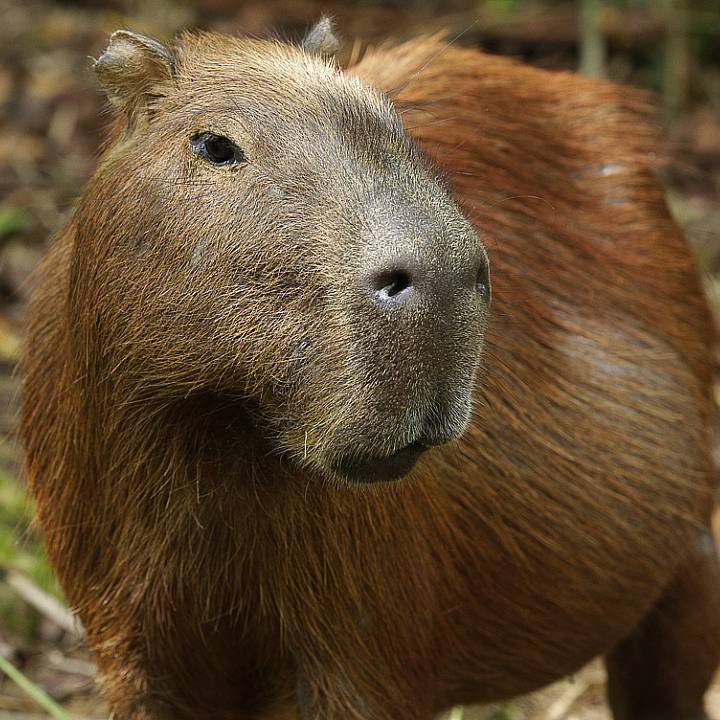
Capybara
The world's largest rodents! Peaceful and sociable, capybaras are also surprisingly good swimmers!

Cardinal tetra

Cave racer
Also called the beauty rat snake, this constrictor has the remarkable ability to move along cave walls very efficiently.

Cheetah
The fastest land animals, differentiate from other spotted cats by two black tear lines that extend from the corner of their eyes to the mouth.
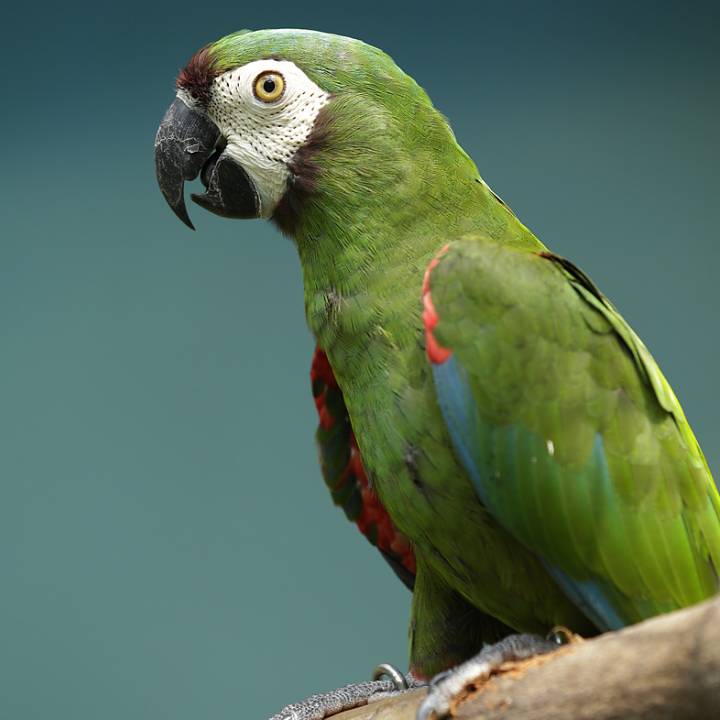
Chestnut-fronted macaw
In spite of their bright colours, macaws are camouflaged in the forest canopy as they blend in with the colourful fruits and flowers they feed on. The chestnut-fronted macaw is found throughout Central and South America.

Chrisangi leaf insect
This insect, a master of disguise, is a species of stick insect native to Singapore. Resembling a leaf, it blends into its surroundings, making it difficult to spot.

Clouded leopard
Named for its cloud-shaped coat markings, this cat is threatened by hunting and habitat loss.

Common barn-owl
It’s the most widespread owl species on Earth, but the common barn-owl has some uncommon vocal calls – it does not hoot! Instead, it produces an eerie, long-drawn-out shriek.

Common brushtail possum

Common crowned pigeon
Their namesake blue lacey crests, resembling elaborate crowns, are actually modified feathers, making them truly majestic.

Common emu
Emus belong to a family of flightless birds called ratites, which also include ostriches, rheas, cassowaries and kiwis.

Common palm civet
Affectionately nicknamed the “Toddy cat”, this furry fellow is essential for seed dispersal and forest restoration.

Cotton-top tamarin
Tamarins usually have twins or triplets. Dad piggybacks the babies most of the time, passing them back to mum only when the babies need to nurse.

Crimson-bellied parakeet
Living in small flocks in the Amazon rainforest, this parakeet is often seen foraging for fruits and flowers.

Discus

Eagle owl
Eagle owls are large, powerful owls known for their prominent ear tufts, deep booming hoots, and fierce predatory skills.

Eastern black-and-white Colobus monkey
See more of our Colobus monkeys at Primate Kingdom. They are capable of leaping up to 15 metres and are rarely seen on ground.

Eastern white pelican
Often seen fishing cooperatively, these birds swim in a wide arc to round up fish before scooping them into their yellow-orange throat pouches.

Eclectus parrot
Eclectus parrots are among the best talking birds, easily mimicking human speech and a wide range of sounds like bells, whistles, and even laughter.

Electric blue gecko
This diurnal gecko is found only in Tanzania's Kimboza and Ruvu Forest Reserves, where it dwells exclusively on pandan plants, which are associated with swamps or limestone within the forest.
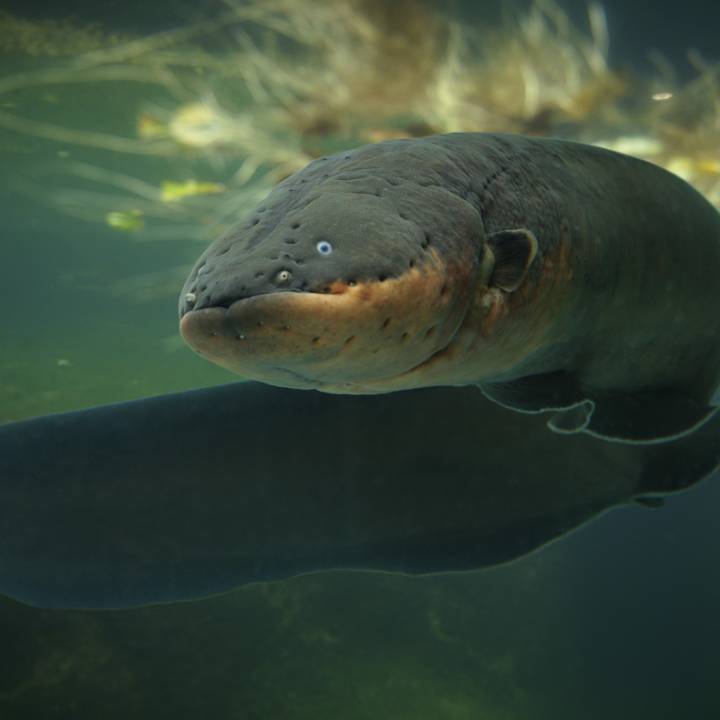
Electric eel
Named for the electrical charge it releases to stun its prey and enemies, the electric eel can generate up to 800 volts of electricity, enough to kill an adult human.

Elongated tortoise
While their patterns range from pale-yellow to solid black, males sport a pink colour around their nostrils when breeding.

Estuarine crocodile
Having been recorded at lengths of 7m and weights of 1,000kg, it is the largest living reptile on earth.

Estuarine crocodile
Adult males can reach lengths of 7m. It is also the crocodile with the widest distribution.

Fahaka pufferfish

Fairy cichlid

Falabella
Falabellas are the smallest breed of horses in the world.

False gharial
False gharials diverged from other crocodiles over 40 million years ago, making them living fossils and offering valuable insights into crocodilian evolution.

Fishing cat
Unlike some other cats, these felines love the water and are some of the best swimmers around. In fact, fishing cats have been seen swimming underwater to grab ducks’ legs!

Fossa
What makes the fossa Madagascar’s top predator? Its adaptations include a good sense of smell and keen vision, even in low-light conditions.

Francois’ langur
These leaf-eating monkeys are born bright orange, but their fur gradually turns black as they grow up!

Fruit bat
Fruit bats play a crucial role in maintaining forest health by spreading seeds and pollinating numerous plant species, including commercially important crops.

Gaboon viper
This snake’s brilliant beauty and easygoing temperament belie its tenacity as a predator.

Gambian pouched rat
It is one of the world's largest rat species, with a distinctive long, nearly hairless tail.

Gentoo penguin
Gentoo Penguins is the world’s fastest underwater bird, swimming at speeds of up to 36km/h!

Giant anteater
The largest of the four anteater species, giant anteaters can reach lengths of 2-2.5 metres. Feeding on ants and termites, their 60cm-long tongues can flick in and out up to 150 times per minute!

Giant freshwater stingray
As one of the world's largest freshwater fish, this stingray can weigh up to 600kg.

Giant panda
Come meet Singapore's resident giant pandas, Kai Kai and Jia Jia!

Giant river otter
This largest of all otters can grow to a standing height of 1.8m and take down small caimans.

Giraffe
Two young Rothschild’s giraffes Adhil and Balaji arrived at Singapore Zoo, part of a globally managed breeding programme under the EAZA Ex-situ Programme.

Giraffe catfish
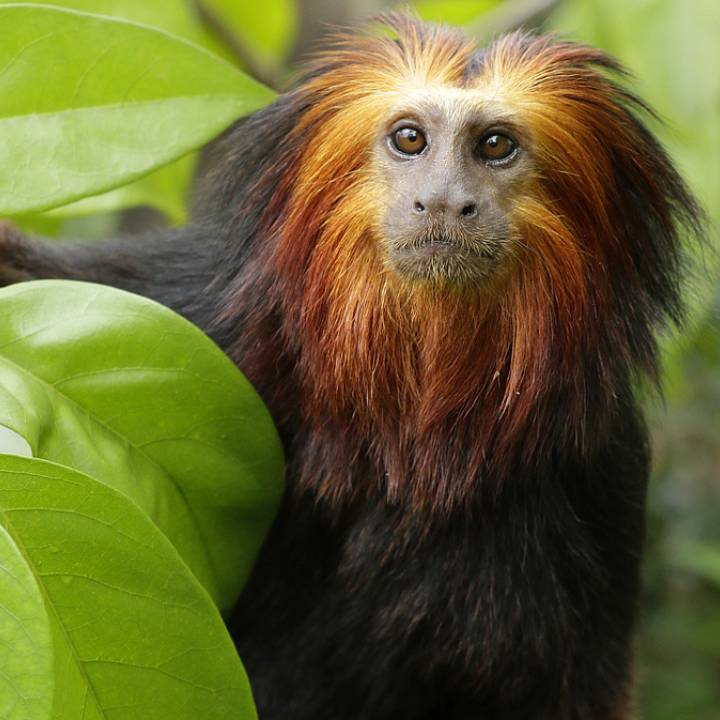
Golden-headed lion tamarin
The Golden-headed lion tamarin is a small, endangered primate native to the Atlantic Coastal Rainforest of Brazil.

Golden-headed lion tamarin
The White-lipped tamarin is a small New World monkey characterized by its either dark brown or black coat with a white patch of fur around its mouth and nose, resembling a "white lip" or "mustache."

Golden-shouldered parrot
The golden-shouldered parrot nests in conical termite mounds. Dubbed the ‘antbed parrot’, it excavates its nest during the wet season when the mound is rain softened.

Golden lion tamarin
Their namesake mane isn't just for looks. The long fur around their face and ears enhances their hearing and helps with communication within their group.

Golden poison frog
Known for their extreme toxicity, these frogs produce toxins twenty times more potent than that of any other poison dart frog.

Goliath tigerfish
The tigerfish is the largest member of the tigerfish clan, a fierce predator with daggerlike teeth.

Goonch catfish

Great argus
Great Argus are amongst the largest pheasants, related to the peafowls.

Great blue turaco
This shy bird not easily observed among the forest foliage except when small groups gather and call in chorus, sometimes for several minutes.

Greater green leafbird
The largest and heaviest leafbird, this bird has a powerful, hooked bill that it uses to pierce mid-sized fruits with a tough covering.

Greater mousedeer
Despite their names, greater mousedeer are neither rodents nor true deer. They belong to their own unique family, Tragulidae, and are considered one of the most primitive living ungulates (hoofed mammals)!

Great green macaw
Hailing from the forests of Central America, the great green macaw is Critically Endangered with only 500 to 1,000 mature individuals surviving in the wild.

Great hornbill
This species is threatened by habitat destruction, especially the felling of old-growth trees required for nesting.

Green-cheeked amazon
This parrot loves company. Hundreds of them gather to roost communally in a few trees, socialising in animated chatters before spending the night together.

Green basilisk
The green basilisk lizard is also known as the plumed or double-crested basilisk. Males can be distinguished by the showy crests on their heads and backs, which are used to impress females.

Grey-handed night monkey
Large round eyes that are perfectly adapted to night vision help this arboreal monkey forage at night. While their diet may vary, they do like to grab and squish insects for food. Yikes!

Grey kangaroo
One of the largest kangaroo species commonly found in Australia, the eastern grey kangaroo swims well and evades predators by diving.

Grey parrot
Among the 350 odd parrot species worldwide, grey parrots are best able to mimic human speech.

Hamadryas baboon
Hamadryas baboon are hardy monkeys with a strong build and a dog-like snout. Males and females look so dissimilar that they have been thought to be of different species.

Harlequin rasbora

Hog badger
They are known to dig burrows, that can then be used by other animals.

Hog deer
These deer often rush through grass with their head down like a pig, rather than bounding over obstacles like other deer.

Hornet tilapia

Humboldt penguin
The Humboldt penguin is a medium-sized black-and-white penguin.

Hyacinth macaw
The hyacinth macaw stands out as the largest of all parrots at 1 m long, attractively cloaked in cobalt blue feathers.

Indian crested porcupine

Indian gharial
The Indian gharial is a critically endangered species that is estimated to have fewer than 200 left in the wild.

Indian gharial
With its bulbous growth on the tip of males’ snouts, it’s no wonder this crocodilian gets its name from the word ‘ghara’ – ‘pot’ in Hindi.

Indian gharial
A narrow snout, attended by an array of fearsome teeth, helps the gharial catch its fish.

Indian rhinoceros

Jade perch

Javan langur
We help conserve them, protecting their natural habitat through the cultivation of sustainable shade coffee, Owa Coffee.

Javan slow loris
Only a few mammals are known to produce venom and the slow loris is one of them. It mixes the secretion from a gland on the underside of its arm with its saliva to produce a toxin.

Jungle nymph
The undisputed queen of stick insects, adult females can reach a whopping 65 grams, making them the heaviest in the world! Males, on the other hand, are slender and lightweight, topping out at around 6 grams.

King penguin
The King Penguin stands at a height of 1 metre. It is the second tallest penguin, after the Emperor Penguin, which is 1.3m tall.

Kinkajou
With dense woolly fur that acts as a raincoat, and a strong tail that they themselves can use to climb back up on, this carnivore is perfectly equipped to raid beehives for honey.

Komodo dragon
The world’s largest lizard is also one of the few lizards with a venomous bite.

Lapradei bichir

Laughing kookaburra
The cackle of the laughing kookaburra is an iconic sound of the dry eucalypt forests of eastern Australia at dawn and dusk.

Lemon cichlid

Leopard cat
With fewer than 50 of them left in Singapore and its surrounding islands, the Leopard cat is Singapore’s last wild cat. Be sure to slow down for them when driving along forested areas!

Lesser flamingo
Out of six flamingo species, the lesser flamingo is the smallest and most numerous with around three million individuals.

Lesser mousedeer
Being one of the world’s smallest hoofed animals, the lesser mousedeer has fangs instead of antlers.

Lesser mousedeer
With a rodent-like face and a rabbit's body perched precariously atop the pencil-thin feet of a piglet, the mousedeer looks like an odd mix of different animals.

Lesser mousedeer
Being one of the world’s smallest hoofed animals, the lesser mousedeer has fangs instead of antlers.

Lesser whistling duck

Macaw

Madagascar hissing cockroach
One of the largest species of cockroaches it hisses by expelling air through abdominal breathing pores.

Major Mitchell's cockatoo
Being seedeaters, cockatoos have large beaks with which seeds can be dehusked efficiently.

Malayan flying fox
With a wingspan of 1.5 – 1.7m, these are some of the largest bats in the world.

Malayan flying fox
When night falls, the flying foxes leave their daytime roost to feed. their keen vision and sense of smell helps them locate fruit and flowers easily.

Malayan horned frog
When threatened, they inflate their throat and let out a loud, unexpected honk that sounds like a cross between a duck and a car horn.

Malayan tapir
Despite their shape, they can run through dense forest vegetation, climb steep slopes on riverbanks, and swim with great finesse!

Malayan tiger
These big cats are expert swimmers and hunters, having been recorded venturing from water up to 2km above sea level!

Malayan tiger
Tigers are at the apex of the food chain. These solitary hunters can handle animal prey up to a ton in weight.

Manatee
Manatees and their dugong cousins are the only aquatic mammals to feed solely on plants.

Maned wolf
Despite its name, it is neither fox nor true wolf. In fact, it is the only member of its genus, Chrysocyon! Instead of howling, they bark or roar to let their mate know where they are.

Masked lapwing
Natives call the masked lapwing the ‘spear-carrying bird’ due to the sharp yellow spurs on its wings.

Masked Palm Civet

Meerkat
Despite their small size, meerkats are surprisingly brave. When facing danger, they'll stand tall and hiss together, creating a formidable front to deter predators.

Mekong giant catfish
Growing up to 3.2m long with a weight of almost 300kg, this large fellow is one of the world's largest freshwater fish.

Military macaw
The military macaw’s curious name is inspired by the green hue of its feathers, similar to the colour of military uniforms. Ranging from Mexico to Argentina, it makes a throaty roar that carries for long distances.

Milky stork
The Milky Stork is classified as endangered, facing significant threats primarily from habitat loss and degradation due to human activities.

Mini pig

Morepork owl

Nicobar pigeon
Unlike its common city cousins, the Nicobar pigeon boasts feathers that shimmer with metallic green, copper, and bronze hues. This iridescence makes them resemble living jewels fluttering through the forest.

Northern red-shouldered macaw
Like other parrots, the northern red-shouldered macaw moves around in flocks, seeking out seeds, fruits, and flowers. These gregarious birds are also known to raid crops and rice fields.

Northern rockhopper penguin
Rockhopper penguins are so named because of their ability to hop over rocks and boulders, sometimes reaching heights of up to 1.8m.

North island brown kiwi
The female kiwi produces the largest egg for its body size - the giant egg can weigh up to 25% of her body weight.

Oriental pied hornbill
Hornbills usually pair for life but for both Stumpy and her current partner, it is love at second sight. Stumpy was one of a pair previously released to the wild. The pair were often seen flying together but one day the male disappeared.

Palm cockatoo
The palm cockatoo is the world’s largest cockatoo. Its distinctive cheek patch of bare skin flushes from pink to bright red when the bird is alarmed or excited.

Panther chameleon
Head down to RepTopia to find out why and how panther chameleons are considered opportunistic hunters.

Papuan hornbill
The Papuan hornbill is the only hornbill in New Guinea. Called ‘Kokomo’ in local Tok Pisin language, it is a show stealer. In flight, its wings give off a very loud whooshing sound.

Parkinson's rainbowfish
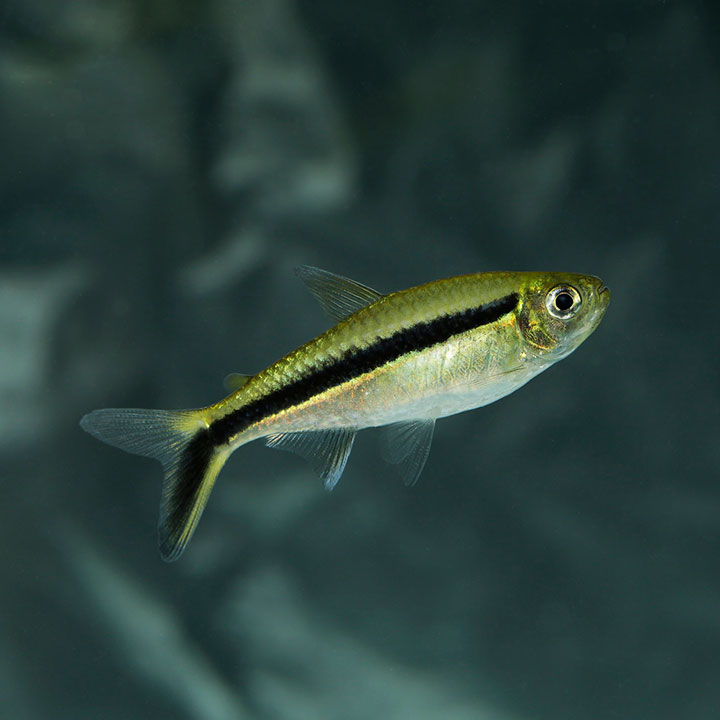
Penguin tetra

Philippine eagle
With its one-metre height, the Philippine eagle is the tallest of eagles. It tips the scales at a maximum of eight kilogrammes, which makes it one of the largest eagles in the world.

Philippine spotted deer
We support their conservation with species repopulation, habitat assessment and protection, and community outreach.

Pied imperial pigeon
As the name suggests, they boast a beautiful "pied" pattern, with a mostly white or pale cream body contrasted by striking bluish-black flight and tail feathers.

Pompadour cotinga
This cotinga showcases sexual dimorphism where the sexes take on different looks. The male has handsome burgundy feathers coloured by carotenoid pigments while the female is ashy grey.

Porcupine
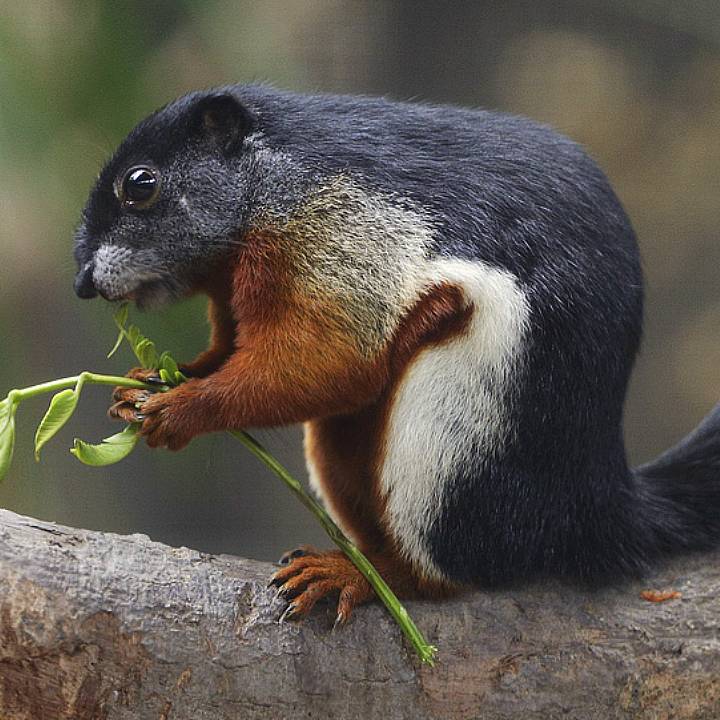
Prevost's squirrel
Their tails aid balance when running, climbing and jumping, and provide warmth when wrapped around them at night.

Prevost's squirrel
Their scientific genus name, Callosciurus, actually means "beautiful squirrel," living up to their stunning orange and black coats. They're considered one of the world's most colorful squirrels!

Pygmy goat
Pygmy goats are the smallest breed of goats in the world. Fully grown, they measure 40cm from floor to shoulder, and weigh around 30kg.

Pygmy hippo
They are native to the forests and swamps of West Africa, primarily in Liberia, with smaller populations in neighboring countries.

Rabbit
Long movable ears and large eyes placed high on the head, providing near-360° vision, help rabbits detect predators from afar. Powerful hind-limbs help them make a quick getaway.

Rainbow-lorikeet
The rainbow lorikeet is distributed across its range in eastern Indonesia, New Guinea, northern and eastern Australia and the western Pacific Islands.

Rainbow shark

Red-and-green macaw
Widespread in Central and South America, the red-and-green macaw resembles the better-known scarlet macaw except that it has green instead of yellow wing coverts.

Red-bellied macaw
The red-bellied macaw of South America eats Mauritia palm fruits almost exclusively, expertly peeling away the scaly husk with its hooked bill, muscular tongue and dexterous toes.

Red-crested cardinal
Hailing from South America, this cardinal forages on the ground for seeds, fruits, and insects. It is kept as a pet on account of its good looks and melodious song.

Red-crested turaco
The only family of birds that is entirely endemic to sub-Saharan Africa, the turacos are known for their punk ‘hairdos’. The feathers around their head do not have barbules, which gives a glossy appearance to their raised crest.

Red-fronted macaw
The critically endangered red-fronted macaw is only found in the Andean valleys of three rivers in Bolivia, with about 272 mature individuals in the wild.

Red-shanked douc langur
The most colourful primate, with tails usually the same length, or even slightly longer than their bodies!

Red-shanked douc langur
The douc langur's almond eyes and delicate features lend a kind of wistful magic to their beauty.

Red-tailed black-cockatoo
Cockatoos are large parrots, known for their long life spans that range from 40 to 70 years. They differ from other parrots in that they have a head crest and no blue or green feathers. Black cockatoos are found only in Australia.
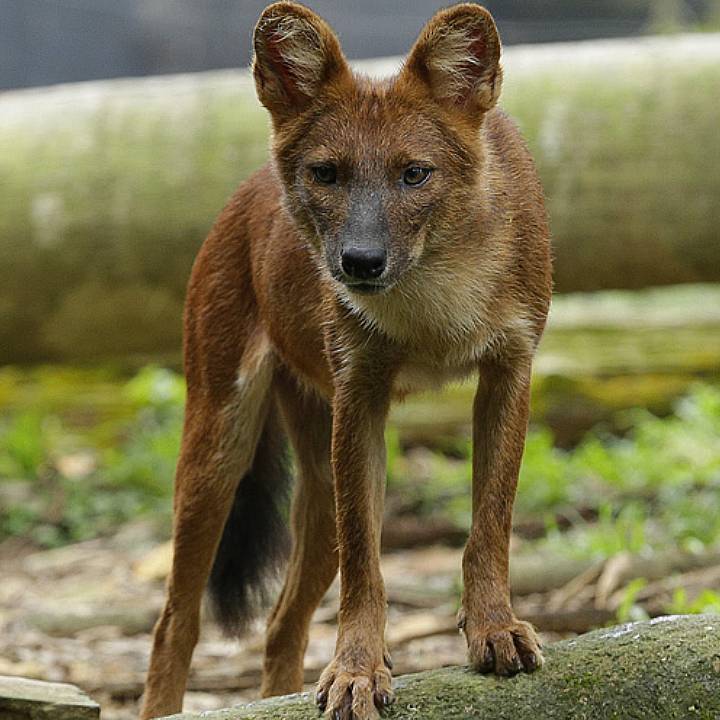
Red dhole
Living in packs of 5-12, they occasionally play and hunt with other packs, forming temporary “super packs”!

Red panda
The red panda's fiery red coat is no doubt why its name in Chinese literally means 'fire fox'.

Red rainbowfish

Red river hog
Unlike some landlocked pigs, red river hogs are excellent swimmers and love spending time near water. They even utilize their strong legs and hooves to gallop through mud with ease.

Red river hog

Regal horned lizard
Game for a scaly good time? Slither down to RepTopia at Singapore Zoo and learn more about the regal horned lizard.
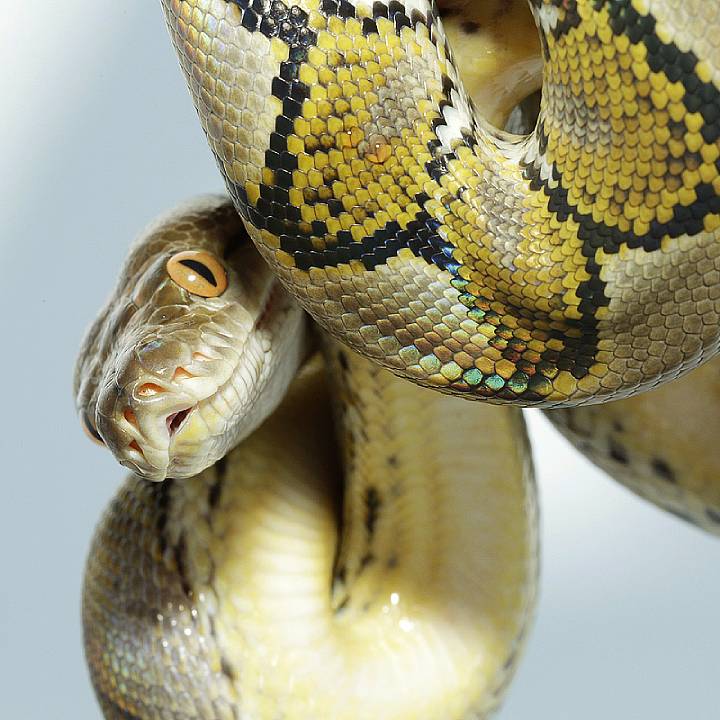
Reticulated python
Besides being the world’s longest snake, this python is also an excellent swimmer, having been reported far out at sea!

Ring-tailed lemur
A repertoire of some 22 different calls helps these primates engage in complex social interactions.

River toad
When the scorching desert sun beats down, River toads aren't ones to sweat it out. Instead, they burrow into the cool sand, crafting cozy underground hideaways where they'll spend most of the scorching summer.

Roseate spoonbill
Named for its unique spoon-shaped bill, the roseate spoonbill has attractive pink plumage and a defined carmine wing patch. The bare green skin on its head takes on a yellowish hue during the breeding season.

Rote snake-necked turtle
This turtle’s snake-like, long neck is about two-thirds the length of its shell.

Rummy-nose tetra

Saddled bichir

Saffron toucanet
A relative of toucans and aracaris, the smallish saffron toucanet occupies the Atlantic Forests of Argentina, Brazil, and Paraguay.

Salmon-crested cockatoo
Cockatoos have distinctive head crests which are normally kept folded back on the top of the head when relaxed. These are raised as a sign of agitation or curiosity, and to signal threat or romantic intentions.

Santa Cruz ground-dove
This bird is observed to perch on low branches and roost in trees. It comes to the ground to forage for food and this is when it is most vulnerable to the introduced rats, cats, dogs and pigs that are found in much of its range.

Scarlet ibis
They are what they eat – scarlet ibises feed on crayfish, crabs and aquatic insects which give their plumage the bright red colour.

Scarlet macaw
A macaw’s beak can crack the hardest nut and even crush your finger. Its flexible and scaly tongue contains a bone.

Senegal bushbaby

Serval

Siamang
The largest of all gibbons, this endangered arboreal, black-furred ape is native to Indonesia, Malaysia, and Thailand.

Siamese flying fox

Skunk

Sloth bear
The sloth bears use their sickle-shaped claws as ‘climbing hooks’ to hoist themselves up trees. They climb not to escape danger, but to get at termite or bee nests.

Small-toothed palm civet
Also called the Three-striped palm civet, this exclusively arboreal omnivore has a diet of forest fruits, insects, frogs, birds, and occasionally, squirrels.

Soro brook carp
With a body length of only 15-20cm, soro brook carp prefer to swim in groups of 10-20, eating insects, plants, and fruits.
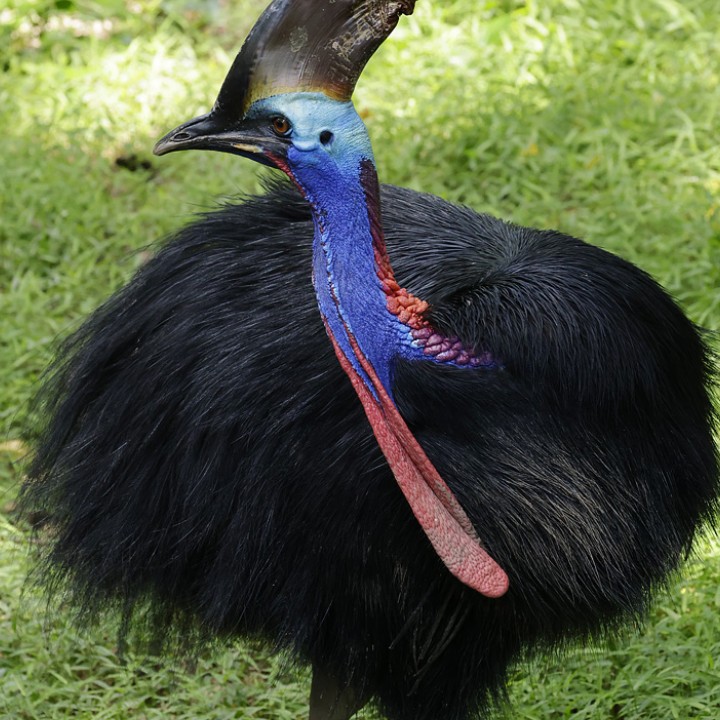
Southern cassowary
The southern cassowary is the third biggest bird after the ostrich and emu. Compared to the single wattled northern cassowary, it is slightly larger and has two wattles, which hang loosely from its neck.

Southern river terrapin
Commonly known as the “Royal Turtle” in Cambodia, it is critically endangered by hunting and deforestation.

Spectacled owl
Special, spectacled, spectacular. This large owl’s song is a loud, pulsing series of deep hoots - not so different to a sheet of metal being flexed rapidly.

Spotted giant flying squirrel
These flying fellows glide from tree to tree by spreading their patagium – the special skin that connects its limbs.

Spotted hyaena
They look like large dogs, but are more closely related to cats like lions and tigers. Their powerful jaws give them the strongest bite of any mammal.

Spotted whistling duck
Spotted whistling ducks have a variety of whistling and piping calls, used for communication, greeting each other, and even defending their territory.

Spotted wood owl

Straw-headed bulbul
Known for its melodious calls, the straw-headed bulbul has been hunted to extinction across much of its range in Southeast Asia.

Striped hyaena
One of the most important members of nature’s cleanup crew. They differ from their spotted cousins by communicating with body movements instead of noises.

Sturgeon
Sturgeons have rows of bony plates covering the head and along the body. The upper lobe of its tail fin is longer than the lower.

Sugar glider

Sulcata tortoise
Sulcata tortoises are one of the world’s largest tortoises and can grow up to 100kg!

Sumatran orangutan
Found in the rainforests of Borneo and Sumatra, they have special feet with long toes for grasping branches, and long limbs that can stretch out far so that they can move easily through the treetops.

Sumba eclectus
Male and female eclectus parrots look so different that they were once thought to be separate species. Males are predominantly green; females are red or purplish red.

Sun bear
Averaging 1.5m tall, it is the smallest of all 8 bear species. Their long tongue helps extract honey and insects.

Sun Bear
Sun bears get their name from the sun-shaped patches of fur they have on their chests.

Sunda pangolin
Scaly from tip to tail, this primarily nocturnal mammal curls into a ball and protects itself with its scales when threatened.

Sunda slow loris
Small but mighty, the Sunda slow loris remains as Singapore’s sole venomous primate and is key for its ecosystem’s seed dispersal and insect control.

Sun parakeet
The sun parakeet is green on the wings, scarlet on the breast and golden orange on the head and neck. This brilliant mix of colours is characteristic of their genus Aratinga, a group of “mini-macaws” found predominantly in northeastern Brazil.

Superb starling
The superb starling (Lamprotornis superbus) is a member of the starling family of birds. It was formerly known as Spreo superbus.

Tanganyikan butterfly cichlid

Tasmanian devil
The name “devil” may come from the sounds they make. They make eerie growls while searching for food at night.

Tawny frogmouth
Often confused with owls, the nocturnal tawny frogmouth is closely related to night jars. It has a flat, wide beak like a frog’s mouth, hence its common name.

Tree kangaroo
These kangaroos traverse the treetops with ease with their powerful arms, sharp claws and long tail.

Two-toed sloth
Whether they are sleeping, eating, mating, or giving birth, sloths carry out most of their activities hanging upside-down from tree branches.

Vietnam pheasant
We manage an insurance colony for this critically endangered bird, working towards its eventual reintroduction into the wild.

Wallaby

White-faced saki monkey
Sakis can make downward leaps covering close to 10m, a feat which has earned them the nickname “flying monkeys”. Head down to Fragile Forest or Primate Kingdom zones to see them in action.

White rhinoceros
A huge animal that feeds exclusively on grass, the white rhino has a wide mouth shaped for ‘mowing’ short grass. Its square lips set it apart from the hook-lipped black rhino.

White tiger
White tigers are not albinos or a different sub-species of tigers. Their white coat, brown stripes and blue eyes are the result of a mutated gene. Both white and orange-coloured tiger cubs can be found in the same litter.

Woylie
A woylie can move six tons of soil per year in nocturnal diggings in search of its favourite food: truffles.

Yellow sand cichlid

Yellow wattled lapwing

Zebra
Stallions of this species mark and maintain territories using middens (dung piles). The Grevy's zebra is distinguished from other zebras by its round ears, white underbelly and the bullseye stripe pattern on its rump.

Zebra dove
True to their name, their feathers are adorned with fine black and white bars, resembling zebra stripes.

